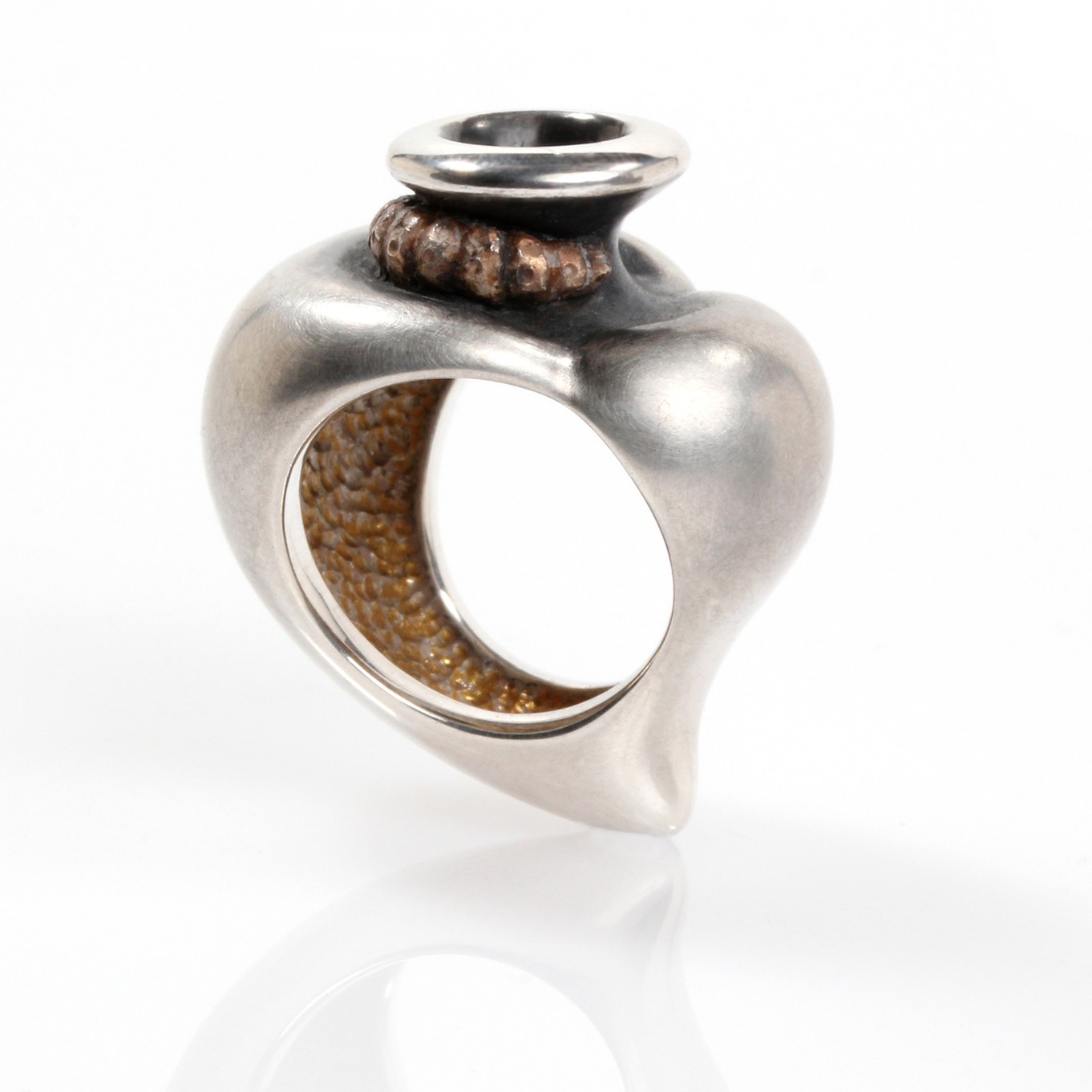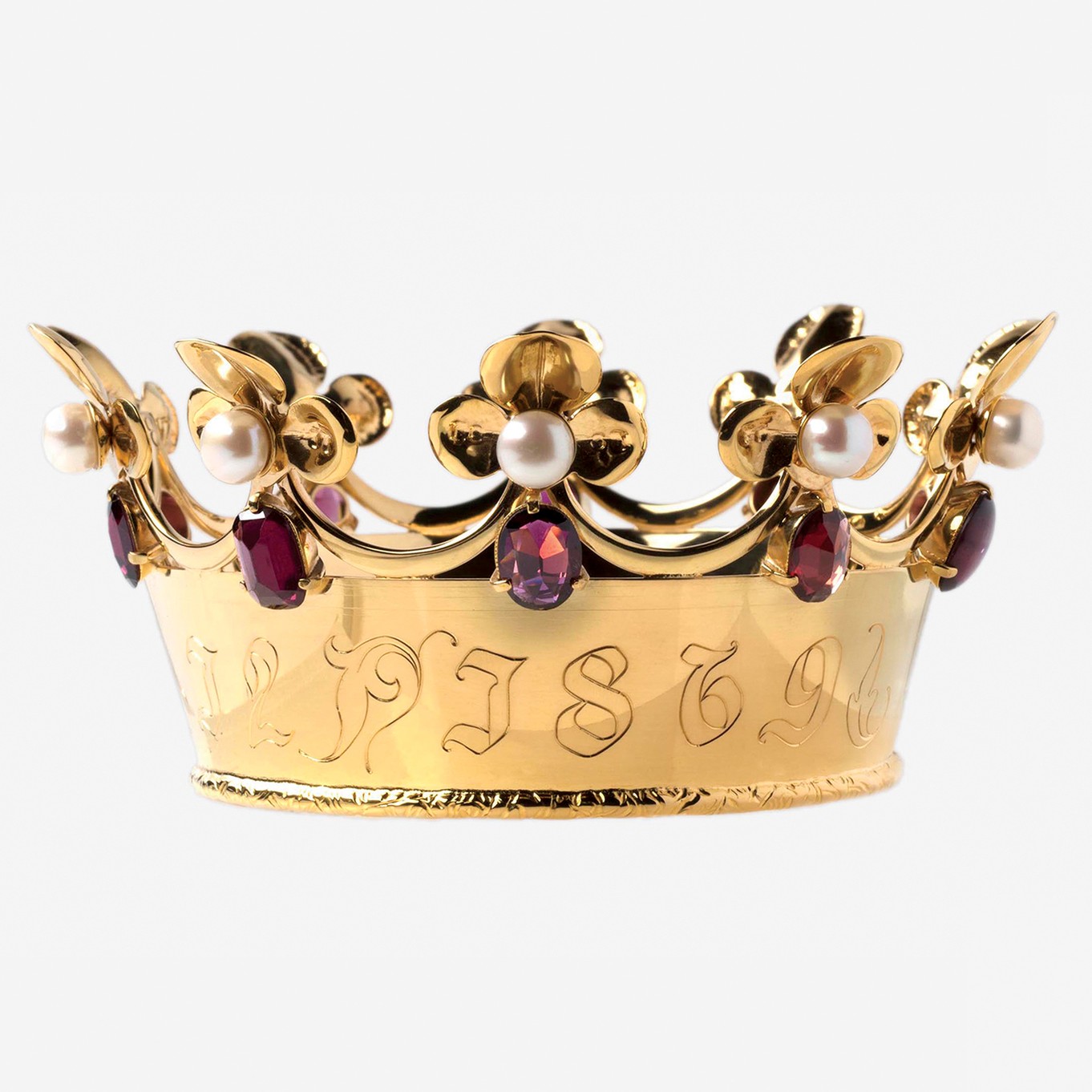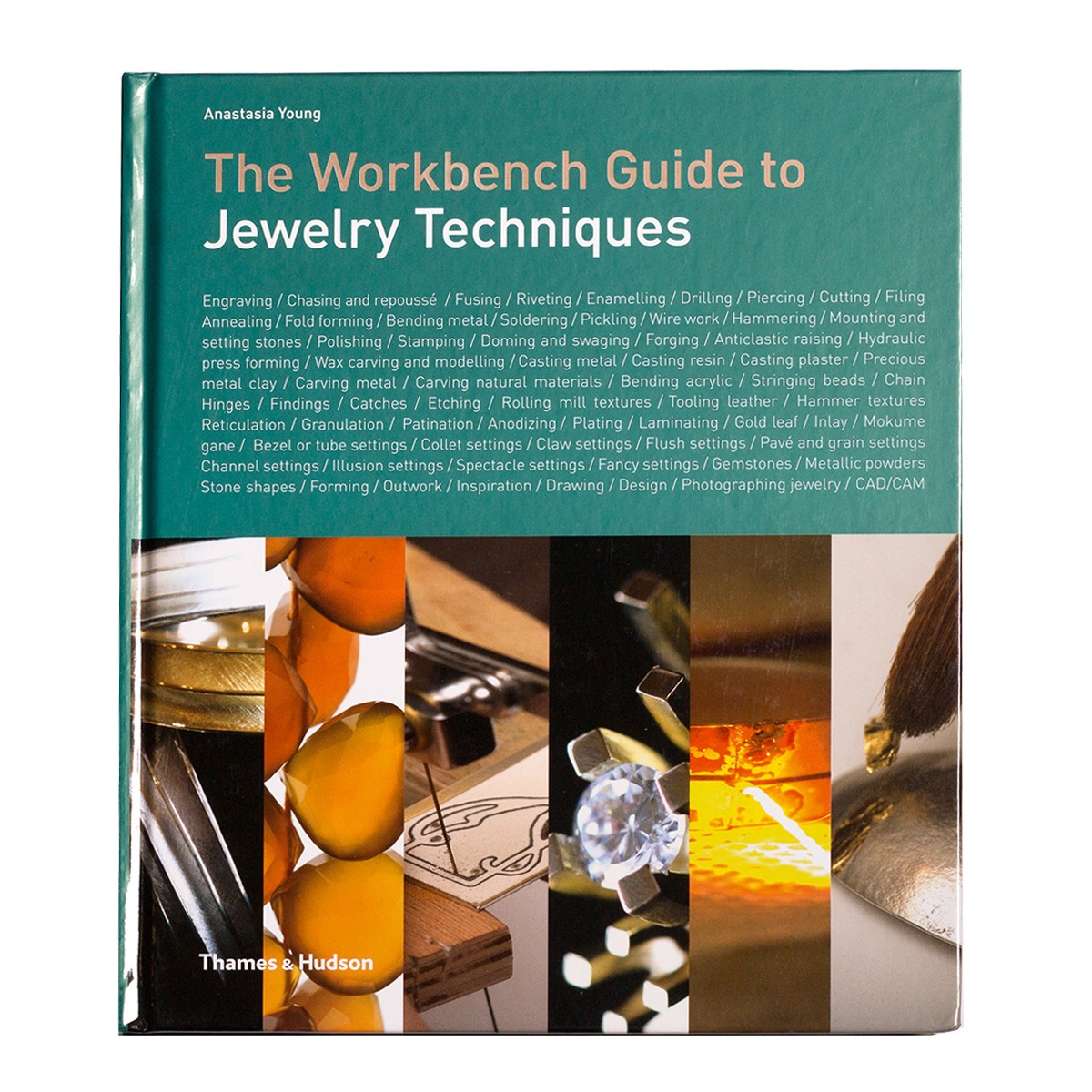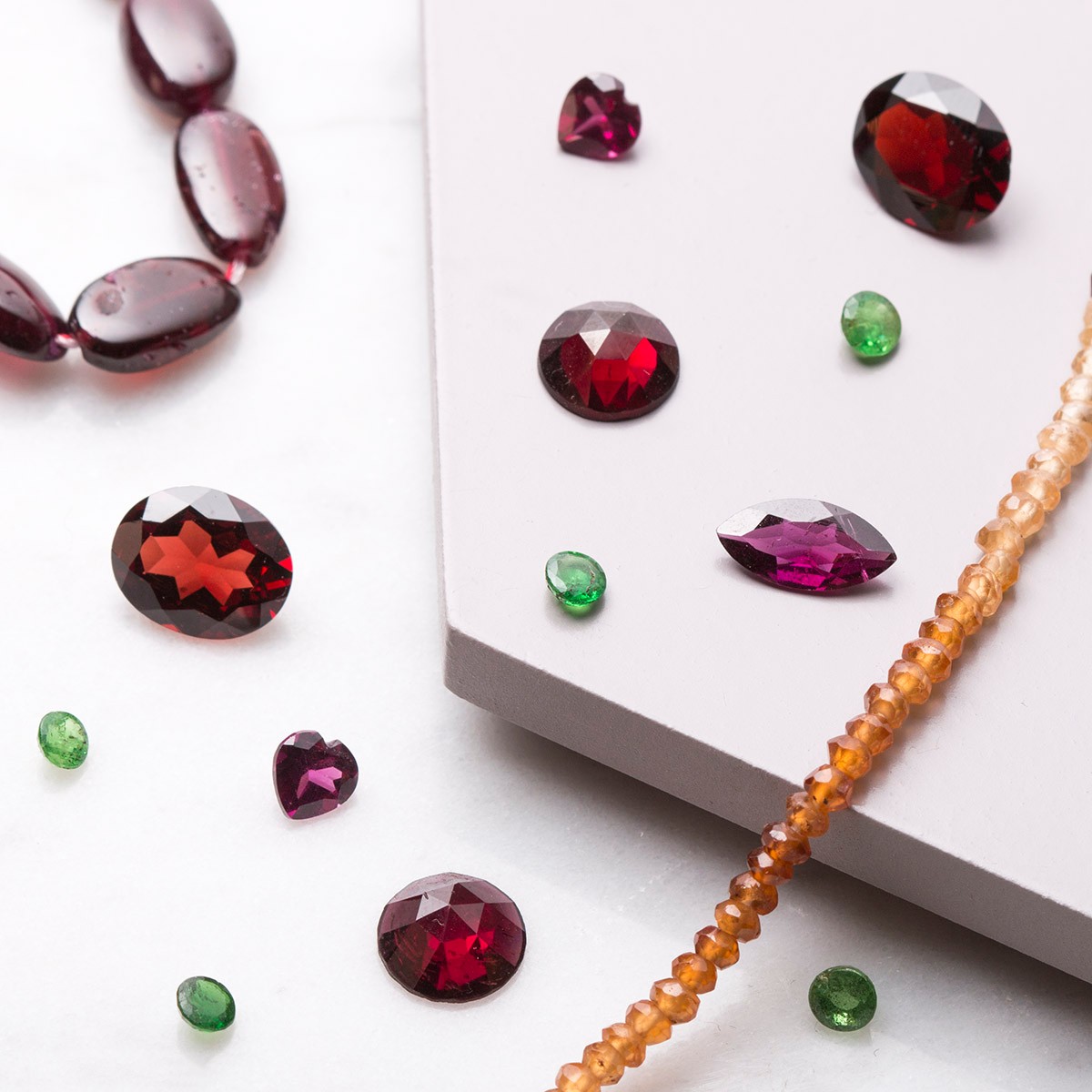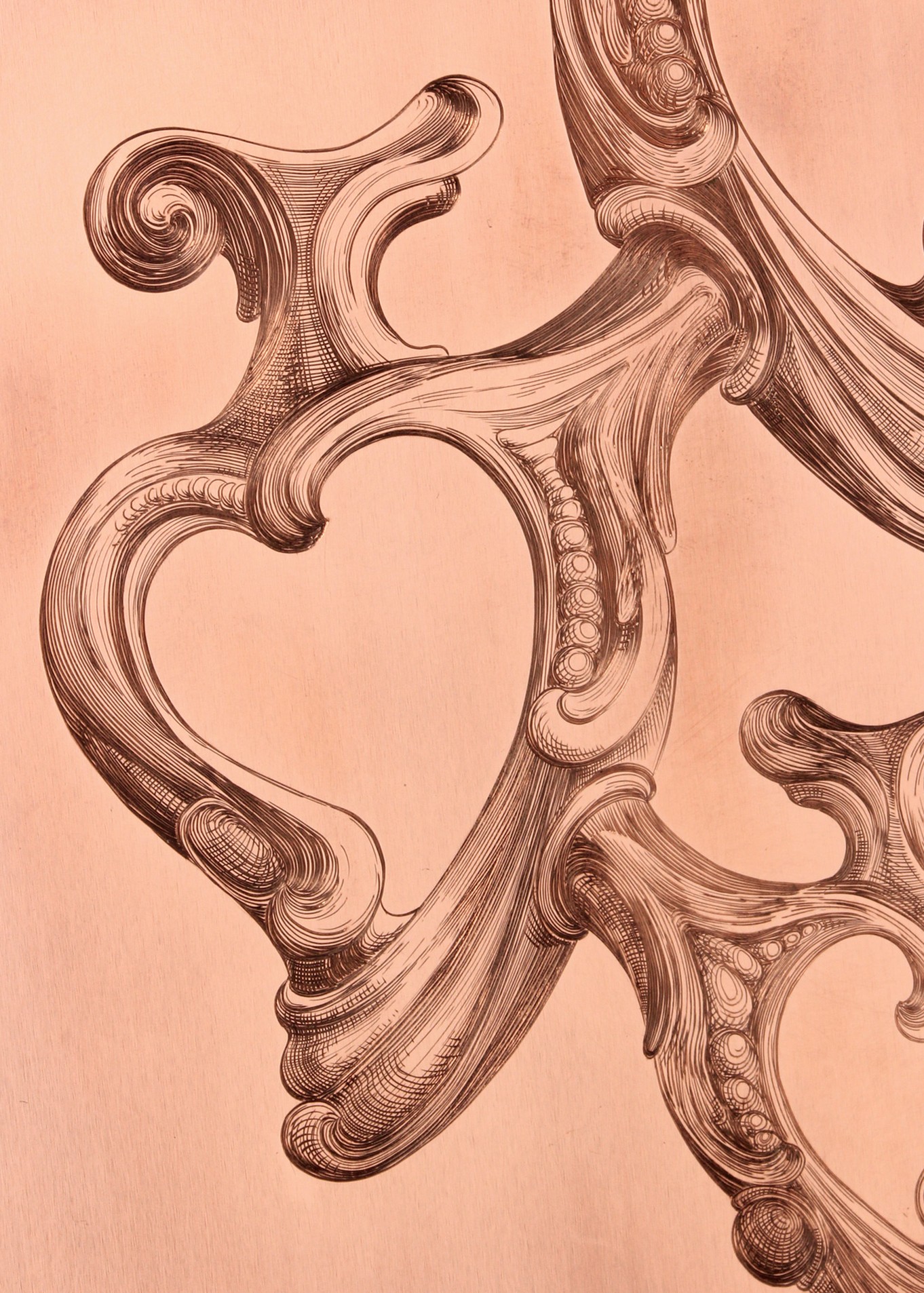Meet Jeweller, Tutor & Author Anastasia Young
"I didn’t have a straightforward path to jewellery making, it was more that it found me, maybe..."
Today we're chatting to Anastasia Young, a jeweller, tutor and author all about her story and incredible designs! We are proud to stock two of Anastasia's popular books 'The Workbench Guide To Jewelry Techniques' and 'The Guide To Gemstone Settings Styles & Techniques' which you'll find in our jewellery making books category. We hear more about the inspiration and process behind these books, as well as a dive into how Anastasia discovered jewellery making, more on having her work being held in permanent museum collections and we discuss favourites - from metals, gemstones to settings! You also won't want to miss insight into a brand new book coming your way on a groundbreaking technique!
Love Parasite Ring, sterling silver.
How did your love for jewellery making begin?
I didn’t have a straightforward path to jewellery making, it was more that it found me, maybe.
I was always very creative and enjoyed drawing and crafting, but I think the defining factors were being fascinated with miniature things and wanting something more technically challenging than most arts subjects offered. Ultimately, I wanted to make things that I could wear!
Tell us about your work which is held in permanent collections of the Science Museum, London and Central Saint Martins Museum!
I felt very privileged to have two pieces held in the CSM Museum and study collection - both are pieces of work that I made during my time as a student, a ring and a bronze medal. The piece at the Science Museum is an engraved paperweight which is situation within the Clockmakers’ Museum Gallery, as part of a project organised by the Hand Engravers Association.
Venn Sifter by Paul Wells. Image credit: Anastasia Young
Describe your style in 3 words!
Industrial, elegant, curious!
We love how unique your designs are, what inspires your work?
The influences I am drawn to are quite wide ranging, but I am very interested in the history of functional objects and mechanical devices. I also like to explore narrative ideas and enjoy story-telling to help me work out all the elements of a piece, for example, a ring I have made recently was designed with elements inspired by the life cycle of a parasitic wasp but combined with the heart-shaped form that I have been working with for the last few years.
What’s your favourite metal to work with and why?
I love working in silver as I feel very comfortable knowing its properties and nuances, and as much as I like working in gold, there’s just not the same relaxed confidence of familiarity.
"the future of jewellery design lies with whoever wants to rise to the challenge, no matter their age, background or experience; there’s no right or wrong way to go about it, and plenty of people discover the desire later in life, when they are ready for it!"
Tell us more about your favourite parts of being a lecturer and how would you describe the students who will be the future of jewellery design
I have just moved to Birmingham to start a new role as a lecturer on the BA Jewellery and Objects course at the School of Jewellery BCU, and I’m really looking forward to settling in and being part of the student journey there.
I find that the most rewarding part of teaching is seeing the students develop and flourish. For the last ten years, I have been teaching at Morley College in London, an adult education college providing access for anyone who wants to learn. I think it’s really important to say that the future of jewellery design lies with whoever wants to rise to the challenge, no matter their age, background or experience; there’s no right or wrong way to go about it, and plenty of people discover the desire later in life, when they are ready for it! Some students aim to make pieces for themselves and friends, and some go on to set up businesses.
What is your favourite technique right now and why?
I would have to say Hand Engraving, I think! I’ve been engraving for quite a few years, and I wanted to learn so that I could add inscriptions to my pieces. I have always had a fascination for text, calligraphy and the history of written words, but it wasn’t until fairly recently that I discovered that printmaking techniques can be used to take prints from engraved plates and I’ve become a bit obsessed with that lately. It’s meant that I’ve gone from engraving tiny things like initials on jewellery to cutting pictorial designs on A4 size copper plates!
What’s your personal favourite setting and why?
I’ve ended up using a lot of tube setting in my own work, particularly the Machina Collection, as it really suits the style of the pieces. I like it because I can mix up the metal colours and use a yellow gold setting on a silver piece, and gold makes a more durable setting than silver, too.
I like a challenge, though, and I continue to try different styles of setting - I’ve been practising star setting recently.
Tell us more about the process and inspiration that led you to become an author, what has the experience been like for you?
I was asked to write The Jewellery Materials Sourcebook not long after I had graduated from the MA at the Royal College of Art, and it was a really good introduction to the process of putting a book together. I had been interested in writing as part of my practise, but I was so excited to be asked to author a book! The three books that I have had published were all commissioned, and I was given just nine months to complete each of them, so it is a very intense and immersive process. It’s important to consider the text and how the images will illustrate it in order to communicate the techniques and ideas effectively, so it requires a lot of planning before starting. Once I have the book outline done, I tend to stick to it quite closely.
We stock your book, ‘The Workbench Guide To Jewelry Techniques’ – tell us more about what we can expect from this book
I was asked to write this book as an up-to-date alternative to Oppi Untracht’s Jewelry Concepts and Technology, which for those who know the book, was quite a daunting proposal! The Workbench Guide is designed to be a comprehensive reference for jewellery making, from tools and materials, through techniques, to design, photography and production techniques.
It’s a great book for anyone learning to make jewellery and although it provides a useful overview, it’s really helpful for specific information on many different aspects of making, and dipping into when required. Certainly that’s what my students tell me!
"the beauty of making jewellery is that there is always something new to learn..."
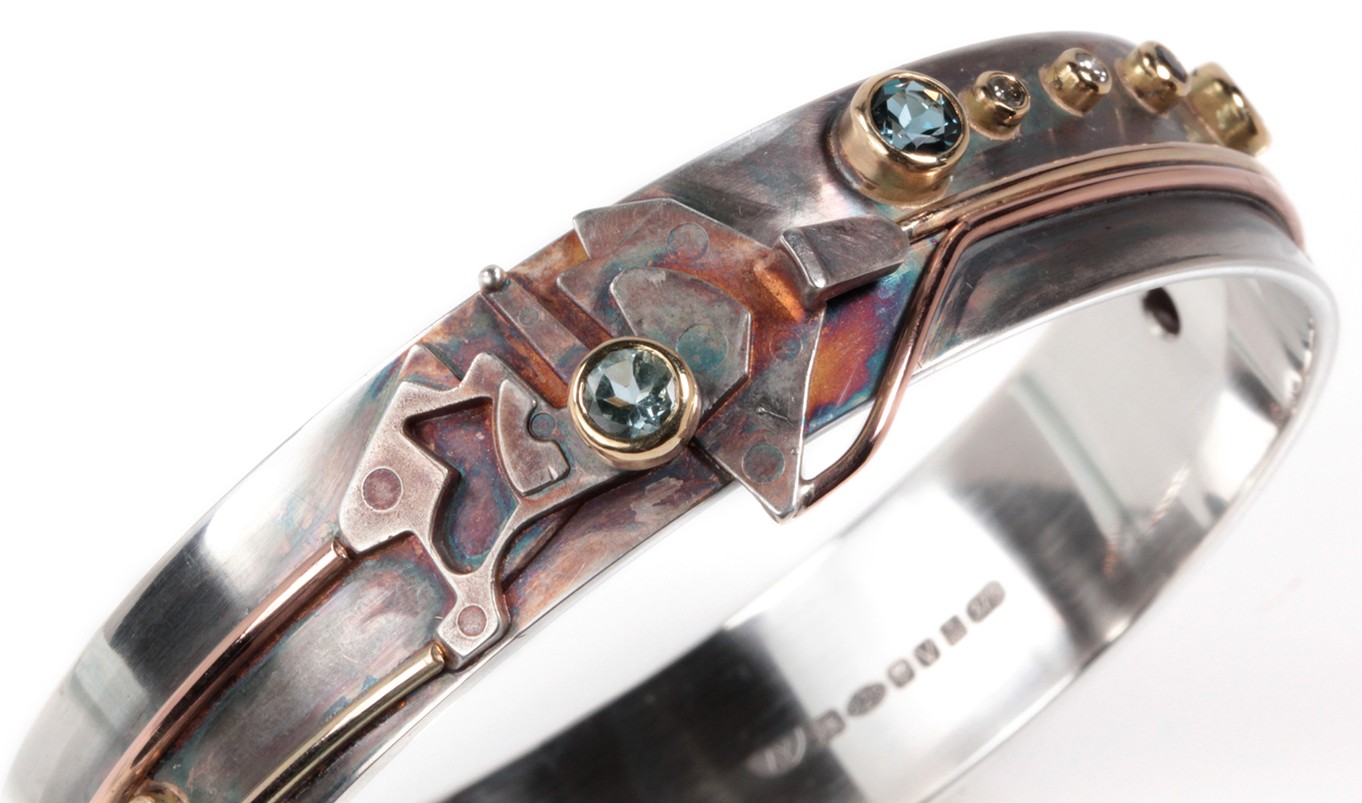
Machina Bangle, sterling silver, 18ct gold, sapphires, diamonds, topaz, aquamarine.
Do you have a favourite book in your collection?
That’s a difficult one! I do have a huge library, and love old books as well as new ones.
If you’re going to make me choose one, then perhaps it could be Crown Jewellery and Regalia of the World, which is a fabulous survey of crowns throughout history and across a wide range of cultures. I find the range of designs and materials used really inspirational, and love that there are images of many of the pieces being worn.
We also stock your book, ‘The Guide To Gemstone Settings’ which provides a technical guide to traditional, modern and experimental approaches to stone setting. Tell us more about your experience in writing this book and were there any challenges along the way?
Certainly: this was my third book, and I took it on because I enjoyed stone setting and wanted to know more about it. Writing a book is a very good way of learning about a subject, and I definitely expanded my knowledge! I saw it as an opportunity to create an accessible introduction for jewellers to learn about the different ways that metal (and other materials) can secure gemstones. The technical requirements and traditions of stone setting technique can be quite off-putting, and I think that contemporary jewellers are often looking for creative ways of incorporating stones into their designs, so I tried to create a useful guide to the different options that can be considered. Where I had less experience, such as CAD, gemmology and grain setting, I asked experts in those subjects to contribute to the relevant sections.
Are your books both suitable for beginner and experienced jewellers?
Yes, absolutely. The level of information included is designed to be suitable for complete beginners, but to contain enough detail to inform those who do have some experience. Anyone who has taken jewellery classes will know that everyone does things a little differently to one another, and the beauty of making jewellery is that there is always something new to learn.
"Make connections and meet people - in real life and in online communities..."
Favourite gemstone and why?
I’ve always loved garnets. You can get lost in that deep, glossy red.
What advice would you give those wanting to launch their own jewellery business?
Take lots of advice: organisations like the Crafts Council and the Goldsmiths Centre have amazing resources available, as well as funding opportunities.
Take the time to feel comfortable with your objectives and don’t rush things. I think that feeling confident about what you’re doing plays a really important role, even though no-one ever feels 100% ready!
What advice would you give to jewellers struggling to get their name out there?
Make connections and meet people - in real life and in online communities. It’s tough and we all need support of one sort or another. You’ll come across other jewellers who have faced similar issues and usually they are pretty friendly and willing to offer advice. I joined the Association for Contemporary Jewellery quite soon after I graduated and although it took me a while to get actively involved, I found it reassuring to be part of a network.
Tell us about your workspace and how you make it your own.
I’m actually between studios at the moment as I have just moved to Birmingham, but my last (home) studio was a haven. I shared the space with my partner, and it was absolutely crammed full of all our tools, materials and work. We are both hoarders, so filling a space with inspirational objects was not a problem for us! I really hope that our next studio is much more spacious!!
What’s been the highlight of your career so far?
I’ve really enjoyed the opportunities I’ve had to travel and meet other jewellers. I’ve been out to Chile twice to teach short courses, supported by the British Council. The international jewellery community is relatively small and we all have so much in common!
Can you tell us anything about your next book which focuses on curved score folding?
My partner Paul Wells cleverly developed a way of scoring metal with wire and then folding it along the score-lines, a bit like metal origami but with curved folds. This technique can be used to create the most amazing forms in thin sheet metal, making it perfect for jewellery as well as functional objects. Paul was very keen to share the technique, as it developed through his teaching, and I was able to put together a book proposal and find a publisher. We worked on the book together, making samples and taking photographs of the stages ourselves; I had so much more experience this time, and I’m so proud of what we’ve achieved.
The book is called New Jewellery Techniques: Curved Scoring and Folding for Metalwork and Silversmithing, and will be published in English and Spanish by Hoaki Promopress Editions later this year.
Last year Paul and I were invited to talk about our work with the technique at the Contemporary British Silversmiths international symposium, and it seems that there is a deal of anticipation for the book! I’m excited to have another book coming out after a ten-year gap, especially as it’s a groundbreaking technique that we can share.
Follow Anastasia Young
WEBSITE | INSTAGRAM | FACEBOOK
Also in this section:
- Chatting To Silver Clay Tutor Emma Roy From Silver Clay Academy
- Chatting To Truro College Exhibition Winner, Caitlin Haughton
- Mixed metals, textures and being inspired by outdoors with Lucy Spink Jewellery
- Magical Metal Clay, Love of Nature and Gems With Beaded Magpie
- Talking Wax Carving, Texturing & Otherwordly Jewellery With Zoë From Brother Banquo And Queen
- Talking Gold And Sand Casting With Billie Ellen Designs
- Meet The Jeweller: Talking Opal Obsession with Jenny from Sea Surf Rocks
- Chatting To Truro College Exhibition Silversmith Winner, Olivia English
- Day In The Life Of Cornish Eco Jeweller Sarah Drew Jewellery
- Wax Carving, Metal Clay & Coastal Designs With Rockpool Jewellery
- Colourful Jewels, Cornish Inspiration & Ring Love With Marsha Drew
- Chatting Unique Nature Inspired Designs & Intricate Sawing With HISO
- Anxiety Jewellery & Favourite Gems With Rozen Jewellery
- Day In The Life Of A Jeweller With Gretel's Metals
- Sea Glass, Healing Gemstones & Cornish Coastal Inspiration With Ula Jewellery
- ‘A Heart of Gold’ Jewellery Collaboration, Raising Awareness of Heart Disease in Women
- Stone Setting, Diamonds & Jewellery Design With Goldsmith Sonia Cheadle
- Magical Metal Clay, Nature & Gems With Susan Studd
- Chatting To Truro College Exhibition Silversmith Winner, Esther Moore
- Handmade Jewellery Inspired By Japanese Heritage & Philosophy With Kumiko
- Creating Unique Jewellery Collections With Gem Lark Jewellery
- Crystal Jewellery With Jessica From 'Roses & Whiskey'
- Statement Crystal Jewellery With FIRENZA
- Electroplating & Crystals With Studio Roan
- Chatting Beading & Wirework With Author & Tutor Sara Withers
- A Day In The Life With Soul Purpose Jewellery
- Meet Jeweller, Tutor & Author Anastasia Young
- A Day In The Life Of A Jeweller With Basia From Stardust Mine Jewellery
- Meet The Jeweller, Author & Tutor Jinks McGrath
- Meet The Maker Transforming Coins & Scrap Metal Into Fun Characters
- Behind the Scenes At The Jewellers Retreat - An Interview With Jessica Rose
- Combining Skills Of Illustration & Metalsmithing With The Sylvan Smith
- Magical & Whimsical Jewellery With Manom Jewellery
- How To Work With Gemstones As A Jeweller With Gemmologist Sally Spencer
- Sea Glass, Personalisation & Christian Jewellery With Jordan Lily
- Chatting Beads, Etsy & Social Media With Emma From Evren Blue
- Garden Studio Tour, Jewellery Making & Packaging With Little Black Cat Jewellery
- Jewellery Inspired By Cornwall, Magic & Myth With Gemheaven Jewellery
- Sand Casting Silver Cockle Shells & Nature Inspired Jewellery With Anna Davenport
- Day In The Life Of Running A Sea Glass Jewellery Business With Created By Niki
- Leo + Elk On Running A Family Business During A Pandemic
- A Day In The Life Of A Jeweller: Finding Normality Again With Kim Thomson
- Gemstone, Body Positivity & Black Lives Matter Designs With 'Jewellery By Eilatan'
- Meet The 'All That Glitters' Contestants Of Series 1
- Briolette Jewellery, Etsy & Learning With Ocean & Earth Jewellery
- What's Inside A Travelling Jeweller's Briefcase?
- Combining Sea Glass & Diamonds With Glasswing Jewellery
- Bohemian Luxe Handmade Jewellery With 'Feathers And Wings'
- Diamonds & Granulation With Milly Maunder
- Then & Now, Jewellery Through The Ages With Sam Stirrat
- Contemporary Engagement Rings With William White
- Designing An Engagement Ring With Guest Writer Sea Surf Rocks
- Meet The Jeweller & Author Of 'Soldering For Jewellers' Rebecca Skeels
- Jewellery Making Notebook Tour With Jasmine Butler
- Running A Handmade Jewellery Business During A Pandemic With 'Louy Magroos'
- Home Jewellery Studio Tour & Top Tips With Jodie Fern
- Let's Talk Business With Jeweller & Tutor, Karen Young
- Nature & Mental Health Jewellery With Lost Kove
- Meet The Jeweller Behind Hazey Designs
- Jewellery Making Storage Tour With Scruffy Dog Silver
- Meet The Beader Behind Dainty Rocks
- Jewellery Workshop Tour With Little Silver Star
- Mindful Gemstone Jewellery With The Sea Tree Company
- Let's Talk Sea Glass Jewellery With Sadie Jewellery
- Chatting Beads & Growing A Jewellery Business With Liz Lloyd
- Beading With Carolyn Anne Jewellery
- Jewellers Of Colour: Connecting BAME Jewellers In The Jewellery Industry
- Meet The Self-Taught Jeweller Behind Corzana
- Meet The Jeweller Behind The Messy Creative
- Handmade Button Jewellery With Crafty Little Koala
- Beautiful Gemstones For Beautiful Skin With Inlight Beauty
- Meet The Boho Jeweller Behind Moonsalt Jewellery
- Etsy Success & Personalisation With Little Homebird Jewellery
- How Jewellery Making Has Helped My Chronic Illness & Mental Health
- Jewellery Making With Nature's Treasures
- Meet Illustrator & Polymer Clay Jeweller, Nyassa Hinde
- Jewellery Trade Secrets With Metalsmith Society
- Sea Glass Jewellery & Launching A Business With Love Kernow
- Meet The Jeweller Behind London Jewellery School & Jewellers Academy
- Meet Stephen Goldsmith, Author Of Polishing & Finishing For Jewellers
- Resin, Flower & Gemstone Jewellery With Ellanor Aquitaine
- Meet The Jeweller Behind Trinkets By Moonlight
- Meet The Self-Taught Jeweller Behind Olivia Street Silver
- Personalised Handmade Jewellery With Ruby & Wonder
- Meet The Cosmic Jeweller, Vikki Hall
- Meet The Eco-Friendly Jeweller, Jemima Hurlock
- Meet The Cornish Jeweller, Thomas Matthews
- Beachcombing & Jewellery Making With Cornish Agates
- Festival & Boho Jewellery With Tegen
- Mokume Gane & Vessel Pendants With Nicola Bottono
- Meet The Jeweller Behind View Of The Sea
- Artists Residency With Jeweller, Jonathan Videgrain
- Meet The Jeweller & Gemstone Addict Behind Made By Oonagh
- Pre-Loved, Vintage Jewellery With Ella Masters
- Baker's Dozen Exhibition With Sarah Shelton-Palmer
- Meet The Jeweller, Tansy Wilson
- Celestial, Boho & Witchy Jewellery With Amber Wheatley Designs
- Let's Talk Metal Clay With Lisa Cain
- Meet The Jeweller Behind When Caitie Met Soda
- Make It Challenge: Recycling The Same Piece Of Silver For 100 Days
- Bespoke Engagement Rings With Blackacre
- Meet The Jeweller Behind Claire Howard Jewellery
- Meet The Jeweller Behind Award Winner Andrew Berry
- Meet The Nature Inspired Jeweller Behind Lima-Lima
- Creating An Opal Ring & Pendant With Little Joy Jewellery
- Jewellery Inspired By Your Home With Claire Halligan
- Award Winner Monique On Techniques & Cornish Inspiration
- Meet The Jeweller Jonathan Videgrain
- Meet The Jeweller Louella Jewellery
- Meet The Jeweller Behind Bijoux De Chagall
- Alternative Wedding Jewellery With Bloody Mary Metal
- Jeweller Chloe Michell Talks Working With Metal Clay, Tools and Inspiration
- Setting Up Your Work Bench With Jeweller Victoria Walker
- An Interview With NAJ Shortlisted Designer of the Year Sheila Kerr

